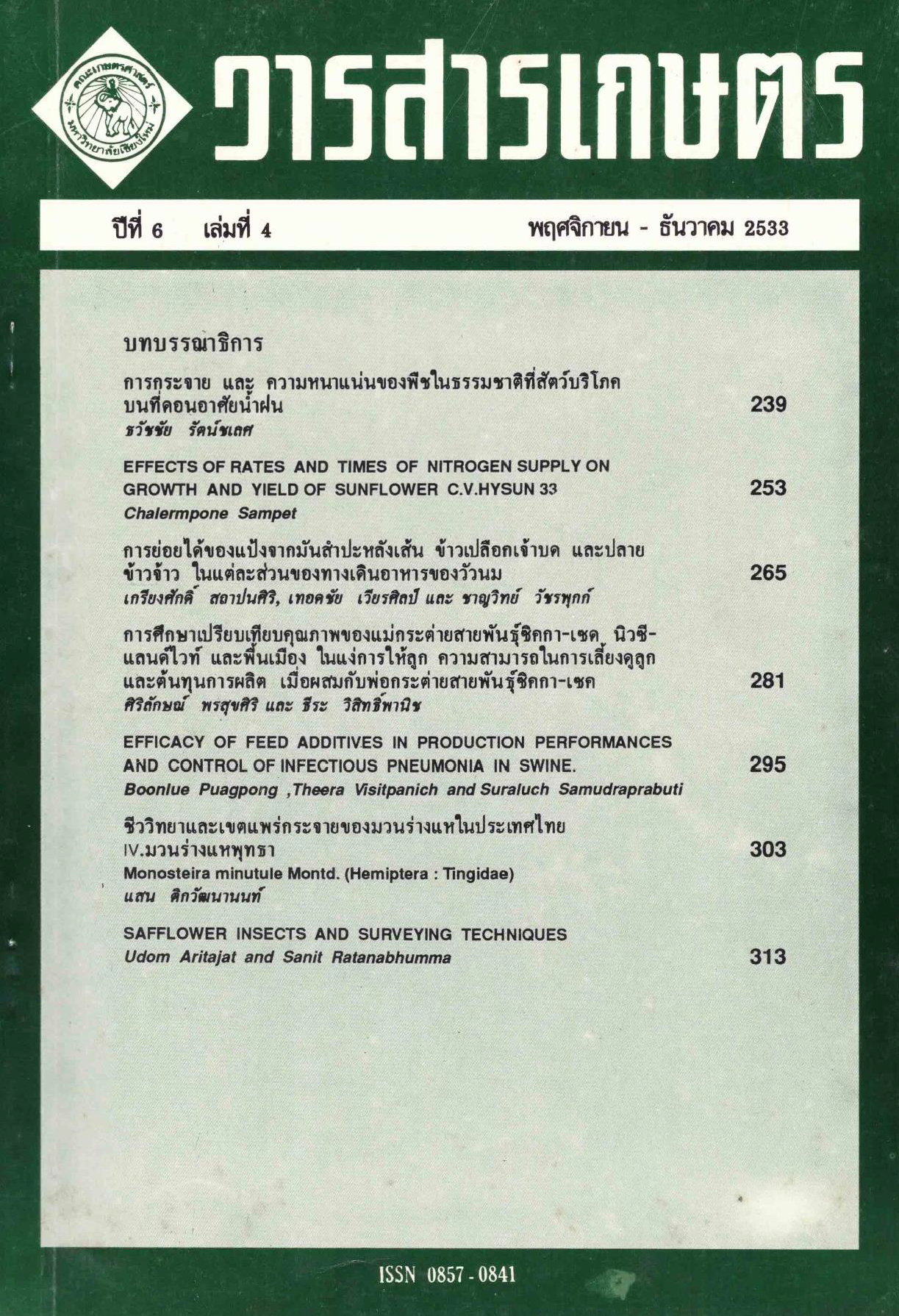SAFFLOWER INSECTS AND SURVEYING TECHNIQUES
Main Article Content
บทคัดย่อ
During the 1986 Safflower growing season, field studies were conducted at Mae Hia Research Station and Training Center, Chiang Mai, and Wieng Papao, Chiang Rai, to determine the species of safflower insects and their abundances, the safflower key pests and their economic thresholds, and the most effectiveness of surveying methods among direct observe method, sweep net catch, and D-Vac machine.
The total of 21 insect pest species, 6 beneficial insect species and various species of the predacious spiders were collected from both safflower experiment fields.
Among all sap sucking insects, the aphids (Uroleucon sp.) and the tobacco whiteflies (Bemisia tabaci) were the two predominant species collected at Chiang Mai experiment field, while the jassids (Empoasca sp.), the tobacco whiteflies (Bemisia tabaci), and the white-backed planthoppers (Sogatella fur cifera), were the three predominant species occurred at Chiang Rai experiment field. Although their damage to the safflower vegetative parts were not reached the economic injury level. their ability in plant disease transmission needed to be further investigated. The leaf beetles, the grasshoppers, and the leaf-eating caterpillars caused little damage to the safflower vegetative parts. Nevertheless, the Heliothis caterpillars had ability to destroy the safflower heads and were determined to be the future key pests of safflower.
The D-Vac machine was significantly the most efficient method among the three sampling methods employed in collecting the small and active sucking insects, the leaf beetles, the braconids, and the spiders. The direct observe method could detect the whiteflies and the spiders, signicantly better than the sweep net catch. The D-Vac machine and the visual search, both were significantly better in detecting the grasshoppers than the sweep net catch. The direct observe method was the best method for detecting the populations of safflower caterpillars, the ladybird beetles, and the syrphid maggots.
Article Details
เอกสารอ้างอิง
McGregor, S.E. (1976). Insect pollination of caltivated crop plants. Agriculture Handbook No. 496. Agricultural Research Service, USDA, Washington, D.C.
Reusink, W.G. and Kogan, M. (1975). The quantitative basis of pest management : Sampling and measuring. In: Introduction to Insect Pest Management. Metcalf, R.L. and Luckmann, (eds.).p.309-351. John Wiley & Sons, Inc., New York.
Southwood, T.R.E. (1966). Ecological methods with particular references to the study of insect populations. Chapman and Hall, Ltd., London.
Thongpean, S. (1985). Safflower. Agricultural Economic news. Office of Agricultural Economics 31: 8-11. (in Thai).


